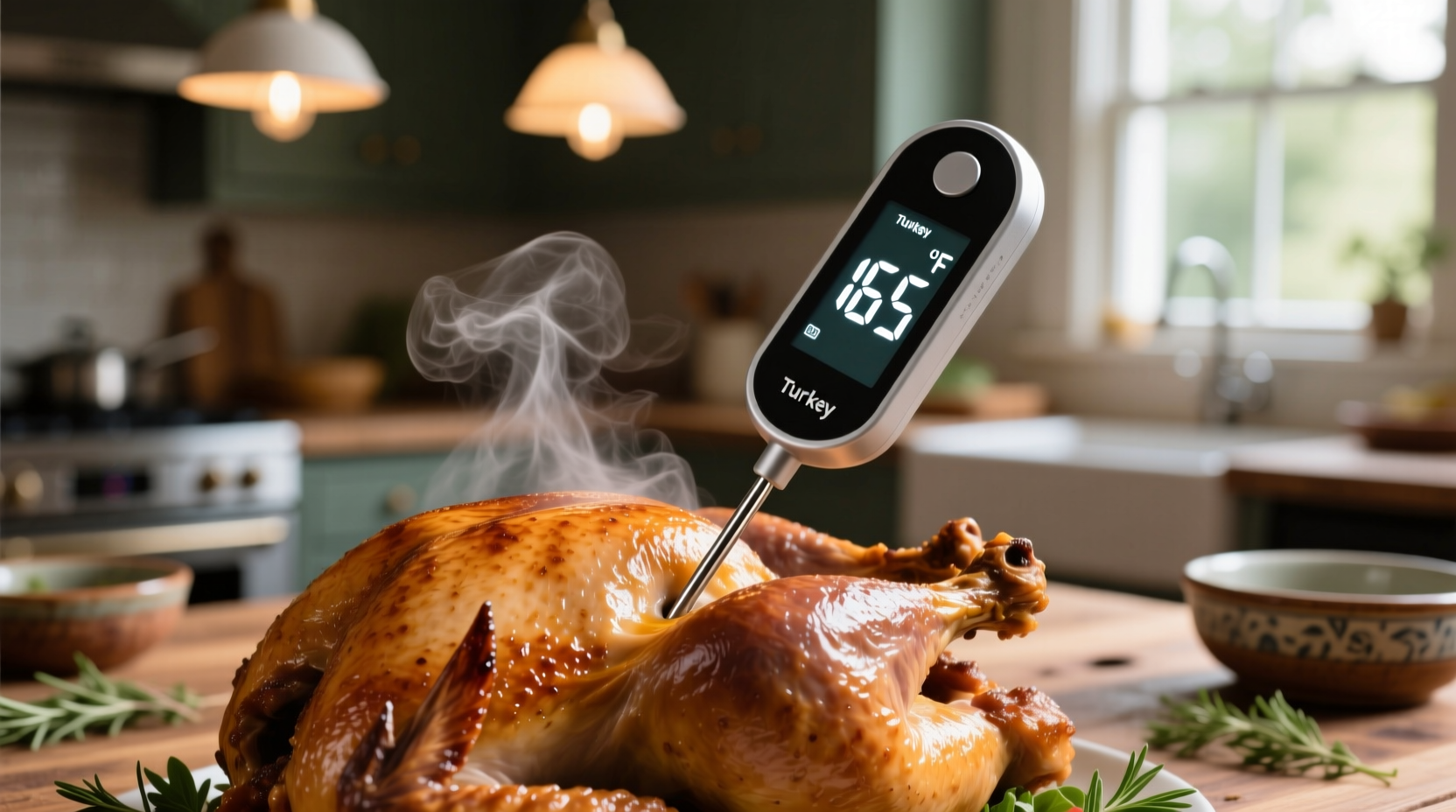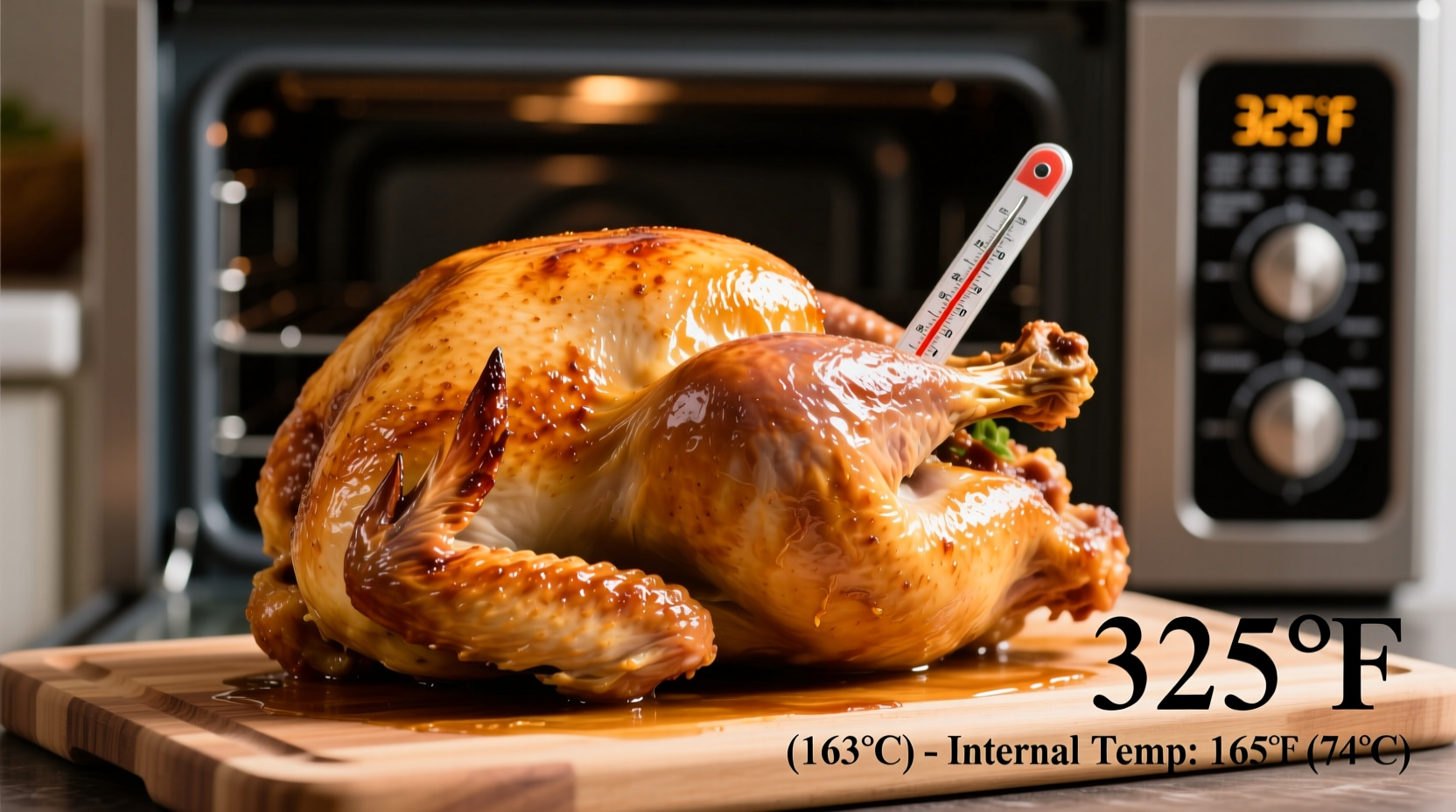Nothing ruins a holiday celebration faster than foodborne illness from improperly cooked turkey. Understanding the precise temperature requirements isn't just about perfection—it's a critical food safety measure that protects your loved ones. As a professional chef who's cooked hundreds of holiday turkeys, I've seen how minor temperature variations dramatically impact both safety and quality.
Why 165°F Is Non-Negotiable for Turkey Safety
The USDA Food Safety and Inspection Service has established 165°F as the minimum safe temperature for poultry based on extensive food safety research. At this temperature, harmful pathogens like Salmonella and Campylobacter are completely destroyed within seconds. Lower temperatures leave dangerous bacteria alive, potentially causing severe illness.
Many home cooks mistakenly rely on pop-up thermometers or cooking time alone. These methods are unreliable—pop-up thermometers often trigger between 160-170°F, potentially leaving some areas undercooked. Only an instant-read thermometer placed in multiple locations provides accurate verification.
| Measurement Location | Safe Temperature | Common Mistakes |
|---|---|---|
| Thickest part of breast | 165°F (74°C) | Measuring near bone or fat pockets |
| Inner thigh (not touching bone) | 165°F (74°C) | Inserting too shallowly |
| Wing joint | 165°F (74°C) | Ignoring this critical spot |
The Science Behind Perfectly Cooked Turkey
Turkey contains different muscle fiber types that respond uniquely to heat. The breast meat (white meat) becomes dry and stringy above 165°F, while dark meat in the thighs benefits from slightly higher temperatures up to 175°F for optimal tenderness. This creates a cooking challenge since both must reach safe temperatures without overcooking any section.
Professional kitchens use a technique called temperature zoning to address this. By positioning the turkey with breast side slightly elevated and using a thermometer alarm that alerts at 160°F, you can remove it early knowing carryover cooking will reach 165°F during resting. This prevents the breast from exceeding 170°F where moisture loss accelerates dramatically.

Step-by-Step Temperature Management Process
Preheating phase: Set oven to 325°F (163°C)—this moderate temperature allows even heat penetration without burning the exterior. Higher temperatures create a false sense of security as the outside appears done while interior remains unsafe.
Monitoring phase: Insert thermometer probe into thickest breast area before roasting. Check temperature every 30 minutes during final cooking stage. For turkeys over 12 pounds, add a second thermometer in the thigh.
Removal timing: Pull turkey from oven when breast reaches 160°F. The temperature will continue rising 5°F during the mandatory 30-45 minute rest period—this carryover cooking completes the safety requirement while preserving moisture.
Special Situations and Temperature Adjustments
Certain preparation methods require temperature modifications. When using a butterflied (spatchcocked) turkey, the reduced thickness means faster cooking—check temperatures 45 minutes earlier than standard timing. For brined turkeys, expect slightly faster heat conduction requiring closer monitoring during the final stages.
Stuffing presents significant food safety challenges. The USDA strongly recommends cooking stuffing separately because when placed inside turkey, it prevents even heating and creates cold spots where bacteria survive. If you must stuff, insert thermometer into center of stuffing—it must also reach 165°F, which typically requires overcooking the breast meat.
Common Temperature Mistakes and Solutions
Mistake: Relying solely on cooking time charts
Solution: Use time estimates as starting points only. A 14-pound turkey might take 3½ hours at 325°F, but variables like oven calibration, starting temperature, and rack position significantly affect actual cooking time.
Mistake: Not calibrating your thermometer
Solution: Test accuracy by placing in ice water (should read 32°F) or boiling water (212°F at sea level). Most digital thermometers have calibration features.
Mistake: Checking temperature too frequently
Solution: Each oven opening drops temperature by 25-50°F. Use a leave-in probe thermometer with remote display to minimize heat loss during monitoring.
Resting: The Critical Final Temperature Phase
Never skip the resting period—this isn't just for flavor development but essential food safety. During the 30-45 minute rest covered loosely with foil:
- Internal temperature continues rising 5-10°F (carryover cooking)
- Proteins relax, redistributing juices throughout the meat
- Final temperature stabilizes at safe 165°F+ in all areas
Cutting too soon causes precious juices to flood the cutting board rather than remain in the meat. For large gatherings, use this time to prepare gravy with the drippings while maintaining food safety standards.
Verifying Doneness Beyond Temperature
While thermometer readings are definitive, these secondary indicators confirm proper cooking:
- Juices run clear (not pink) when thigh is pierced
- Legs move freely in joints when wiggled
- Skin achieves deep golden brown color
Remember that color alone isn't reliable—turkey can appear done while still unsafe, or look underdone when perfectly cooked due to factors like oven type or marinades. The thermometer remains your only accurate verification method.
Frequently Asked Questions
Can I cook turkey to 160°F instead of 165°F if I let it rest?
Yes, but with precise timing. Remove turkey at 160°F and rest 30-45 minutes covered. The temperature will rise to 165°F during resting, meeting safety requirements while preserving moisture. Never serve below 165°F in the thickest areas.
Why does my turkey thermometer show different temperatures in different spots?
Turkey has varying thicknesses and fat distribution. Always check multiple locations—breast, thigh, and wing joint. The thinnest areas (breast) cook faster than thick joints. Safety requires all areas to reach 165°F, so cook to the highest required temperature in the slowest-cooking area.
Does smoking turkey require different temperature guidelines?
The safe internal temperature remains 165°F regardless of cooking method. However, smoking at lower temperatures (225-250°F) requires longer cooking time. Use the same thermometer verification process, checking more frequently during the final hours as the temperature approaches 165°F.
How long can cooked turkey safely remain at room temperature?
Follow the USDA's 2-hour rule: cooked turkey shouldn't remain between 40°F and 140°F for more than 2 hours (1 hour if room temperature exceeds 90°F). After carving, refrigerate leftovers within 2 hours to prevent bacterial growth. Divide large portions into shallow containers for faster cooling.











 浙公网安备
33010002000092号
浙公网安备
33010002000092号 浙B2-20120091-4
浙B2-20120091-4